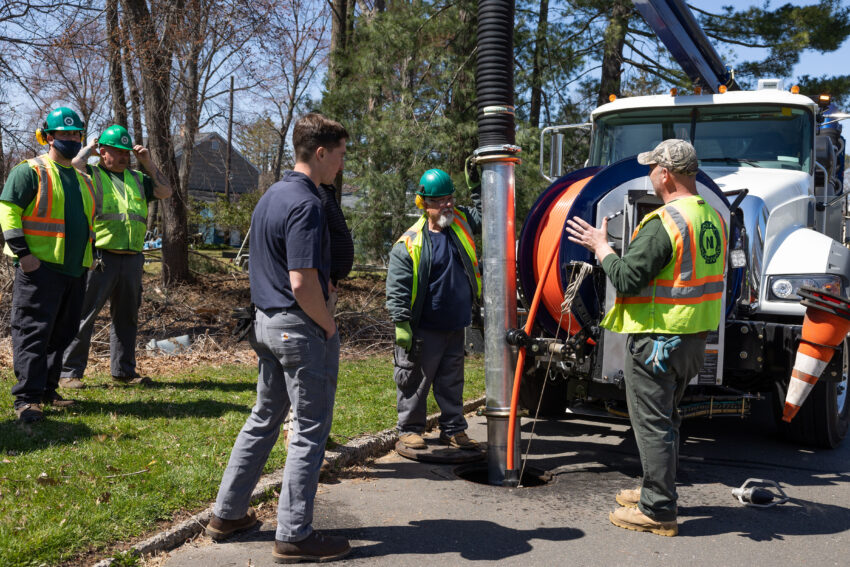According to EPA estimates, upwards of 40,000 Sanitary Sewer Overflows (SSO) occur in the United States every year. The untreated sewage from these overflows can contaminate the nation’s waters, causing serious water quality problems. It can also back up into basements, causing property damage and threatening public health.
“Sewer pipes fill up from any blockage and can back up into homes or run down the street, so the federal government mandates that a certain amount of sewer line must be properly maintained annually, or fines are levied,” says Dan Story, Operations Manager at KEG Technologies, a manufacturer of sewer and storm line products including nozzles, chain cutters, and camera nozzle systems. The Spartanburg, SC-based company is a member of NASSCO, the National Association of Sewer Service Companies.
Most municipalities are fully aware that preventing sewer overflows is a national enforcement priority for EPA, yet many struggle to stay compliant. When municipalities are short-staffed and must maintain miles of sewer line, they often end up just responding to emergencies. Now, a growing number of municipalities are choosing to utilize more effective tools and techniques to properly maintain the line and stay EPA compliant before SSOs occur.
Sanitary Sewer Overflows are the result of pipe sewer blockages caused by such factors as:
- Weather events
- Invasive tree roots
- Fats, oils, and grease
- Products such as sanitary pads, and tampons, and baby or facial wipes
SSOs also result from improper system operation and maintenance. Proactively maintaining sewer lines with the most effective tools and tactics can be vital not only to preventing SSOs but to resolving them quickly resolve if they occur.
Preventing SSOs
The first line of defense against such SSOs is to use effective tools, specifically powerful nozzles, to sufficiently clean sewer lines and remove any debris so it does not accumulate to become a blockage. In this effort, using high-performance Tier 3 nozzles instead of lower performing Tier 1 or 2 nozzles can be an important advantage.
Obstructions can also develop into blockages that trigger SSOs when the camera crew cannot assess all line on a regular basis. Using a nozzle-camera like the KleenSight from KEG during routine cleaning can capture high-definition video that shows if there are roots in a pipe, or other debris that should be removed before becoming a problem.
When larger blockages must be removed robust chain cutters can do so quickly and efficiently.
Finally, there are customized training programs for municipalities that specifically target the challenge of SSOs by covering common cleaning errors and proper line assessment.
For more information: visit www.kegtechnologies.net; call 866-595-0515.

